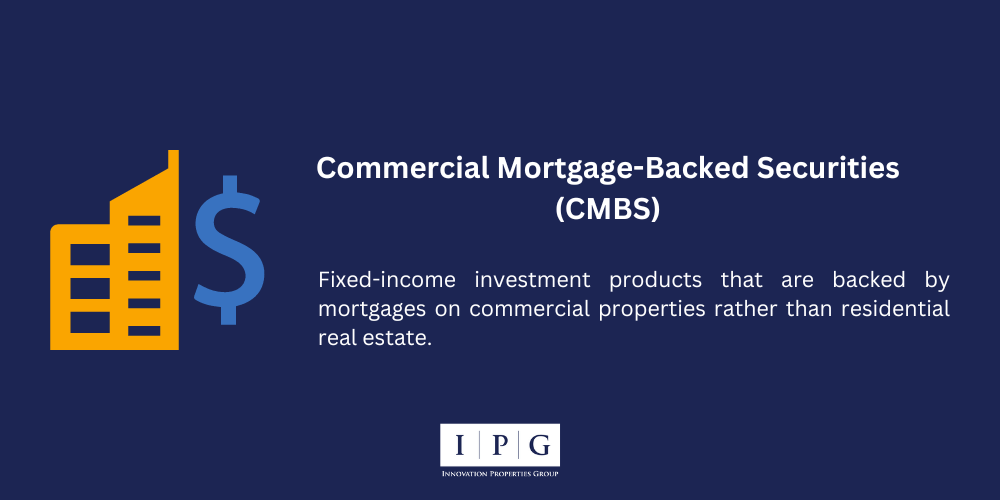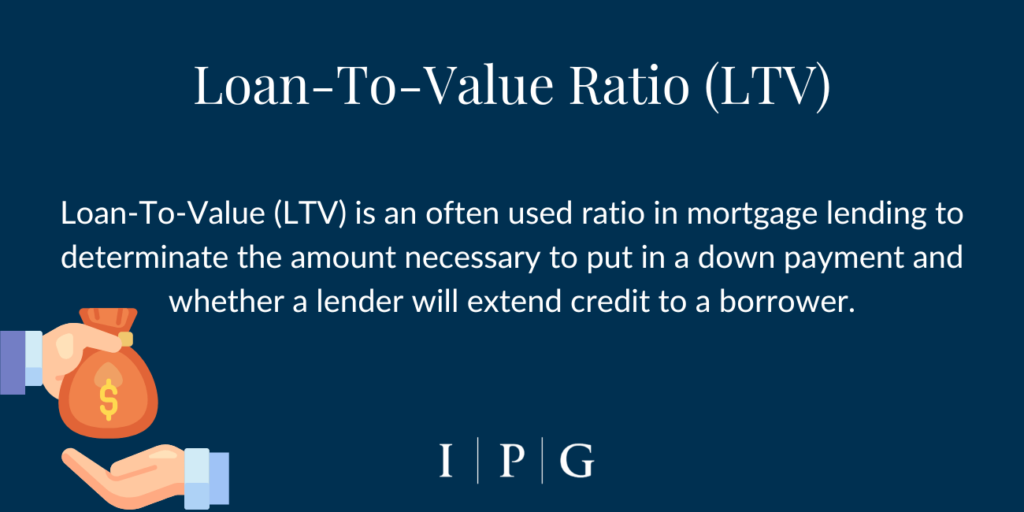Commercial Mortgage-Backed Securities (CMBS) Explained

Commercial Mortgage-Backed Securities (CMBS) are an innovative structured finance product, essential in the commercial real estate landscape. These securities are formed by pooling various income-generating commercial mortgages, creating a collateralized loan that offers unique opportunities for both borrowers and investors. In the world of commercial real estate (CRE), CMBS loans are not just a source of capital for acquiring properties but also a means for investors to diversify their portfolios and mitigate risk.
As a vital component in real estate financing, understanding CMBS is crucial for anyone involved in or interested in the commercial property market. This blog will guide you through Commercial Mortgage-Backed Securities, explaining their formation, function, and the significant role they play in the CRE sector.
What Are Commercial Mortgage-Backed Securities (CMBS)?
Commercial mortgage-backed securities are fixed-income investment products that are backed by mortgages on commercial properties rather than residential real estate.
Commercial Mortgage-Backed Securities, commonly known as CMBS, are a type of fixed-income investment product. Unlike their residential counterparts, CMBS are backed by commercial property mortgages, offering a distinct avenue for liquidity to both real estate investors and commercial lenders.
One of the unique aspects of CMBS is the lack of standardized structuring, which can present complexities in their valuation. These securities typically encompass a diverse array of commercial mortgages, with varying terms, values, and types of properties, including multi-family residences and other commercial real estates. This diversity contributes to the appeal of CMBS. Additionally, CMBS tend to carry a lower pre-payment risk compared to Residential Mortgage-Backed Securities (RMBS), primarily due to the typically fixed terms of commercial mortgages.
This distinct nature of CMBS makes them an intriguing option in the world of real estate investment, meriting a closer look by those involved in commercial lending and investing.
How Do They Work?
Commercial Mortgage-Backed Securities (CMBS) function similarly to collateralized debt obligations (CDOs) and collateralized mortgage obligations (CMOs) in that they are structured as bonds. These bonds are backed by a collection of commercial mortgage loans, which serve as collateral. The principal and interest from these loans are passed on to investors, providing a safeguard in the event of default. You can use a commercial mortgage calculator to estimate potential payments or returns for these types of investments.
Contained within a trust, CMBS encompass a variety of loans with different terms, property types, and loan amounts. The assets securitized into CMBS may include diverse properties like apartment buildings, factories, hotels, office buildings, and shopping malls.
Typically, the loans in CMBS are non-recourse debts, meaning the lender’s recourse is limited to the collateral itself in case of borrower default.
The complexity of CMBS necessitates the involvement of various market players, including investors, primary, master, and special servicers, directing certificate holders, trustees, and rating agencies. Each participant plays a critical role in ensuring the smooth functioning and performance of CMBS.
CMBS Types
Commercial Mortgage-Backed Securities (CMBS) are backed by mortgages categorized into tranches based on credit risk, ranging from the highest quality (senior) to lower quality. The top-tier tranches, known as senior tranches, offer lower risk and consequently lower interest rates, as they are prioritized in repayment. They receive both interest and principal payments first.
The structure typically includes:
- Senior Tranche: These have the lowest risk due to their priority in repayment but yield lower interest rates.
- Mezzanine Tranche: Positioned below the senior tranche, mezzanine tranches carry more risk but offer higher yields. In defaults, they are paid after the senior tranche.
- Equity Tranche: This is the riskiest part, bearing the highest potential gains as well as risks.
The lowest tranche often contains the riskiest loans, contributing to the speculative nature of the investment. This structuring is crucial for banks, enabling them to issue more loans, and for investors, offering access to commercial real estate with potentially higher yields than government bonds.
However, it’s important for investors to note that in a CMBS, lower tranches will only receive payments after the higher tranches are fully paid off, including interest, in the event of a loan default.
CMBS Key Elements
A Commercial Mortgage-Backed Security (CMBS) involves several components beyond the underlying mortgages that can significantly impact its profitability. Investors typically evaluate the following factors:
- Interest Rates: CMBS loans are typically fixed-rate, pegged to the Treasury interest rate. They often include an initial period with favorable payment terms.
- Term Length: The standard duration of CMBS loans ranges from 5 to 10 years, often culminating in a balloon payment. The exact term is influenced by various factors, including the borrower’s creditworthiness and cash flow.
- Prepayment Penalties: These are designed to discourage borrowers from early mortgage payoff, thereby ensuring regular payment streams.
Advantages of Commercial Mortgage-Backed Securities (CMBS)
Commercial Mortgage-Backed Securities (CMBS) offer distinct advantages and disadvantages for borrowers and investors alike, similar to other debt securities.
- Fixed Interest Rates – CMBS loans provide the stability of fixed interest rates, ensuring repayment amounts remain constant throughout the loan’s term. This stability is particularly advantageous for commercial borrowers whose revenue streams may not necessarily align with increasing loan terms.
- Nonrecourse Loans – A key feature of CMBS loans is their nonrecourse nature, protecting borrowers from personal liability in case of default, except in instances like fraud.
- Loan Assumption -CMBS allows for the assumption of existing loans by new property owners for a fee, facilitating smoother property transactions without the need for new loans.
- Prepayment Penalties – To offset the loss of future interest income for investors, CMBS includes prepayment penalties for early loan payoff. These penalties can be more significant than those in residential mortgage settings.
- Defeasance Clauses – In CMBS, defeasance clauses may require borrowers who pay off loans early to provide alternative securities, like Treasury bonds, to maintain the expected cash flow for investors. These clauses add a layer of complexity to CMBS contracts.
While CMBS offers unique benefits like fixed rates and nonrecourse protection, it also introduces complexities such as significant prepayment penalties and intricate defeasance requirements, aspects that investors and borrowers must carefully consider.

Pros and Cons of CMBS
Pros:
- Stable Interest Rates: CMBS typically feature fixed interest rates, providing predictability in repayment amounts.
- Limited Personal Liability: Generally, borrowers are not held personally liable if they default on payments.
- Transferable Loans: Loans associated with a mortgaged property can be transferred to new buyers when the property is sold.
Cons:
- Stringent Prepayment Penalties: CMBS often carry substantial penalties to deter borrowers from early loan repayment.
- Alternative Collateral Requirements: If borrowers choose to pay off a loan early, they may need to supply different collateral to compensate.
CMBS Market
CMBS loans are a vital financing source for commercial real estate (CRE) acquisitions, including office buildings, shopping centers, hotels, and industrial properties. They also serve to refinance or recapitalize existing properties. In the CRE market, where high property prices necessitate external capital, CMBS loans play a crucial role.
The essence of CRE investing hinges on leveraging, a key factor driving returns. By using CMBS loans, CRE investors can minimize their equity contributions, freeing up capital for portfolio expansion or property enhancements through value-add strategies.
This financing model is essential for CRE investments to achieve their target returns, especially considering the accessibility of affordable debt. CMBS loans, offering a lower initial equity requirement, yield higher returns for borrowers, and provide crucial liquidity in the CRE market.
Reflecting their importance, the U.S. CRE market’s scheduled CMBS loan maturities for 2023 and 2024 total approximately $900 billion.
2024 CMBS Market Forecast and Trends
As 2024 approaches, the commercial real estate (CRE) market, including investors and lenders, anticipates continued challenges with rising delinquencies and weak demand, a trend that has persisted since the pandemic’s onset. The Federal Reserve’s interest rate hikes in 2023 have further strained the sector.
As of October 2024, the CMBS market’s delinquency rate stood at 4.63%, according to Trepp’s research. This rate, although significant, remains lower than the all-time high of 10.3% experienced in July 2012 and during the COVID-19 peak in June 2020.
The commercial office sector remains the most affected, with delinquencies reaching nearly 5.6% in October 2023. While lower-rated CMBS tranches bear the brunt of credit impairments and losses, higher-rated tranches are expected to be more resilient.
A key strategy among commercial borrowers has been to seek extensions on existing loans rather than refinancing at current, less favorable rates.
CMBS Loan Eligibility Criteria
To secure a CMBS loan, borrowers must meet specific underwriting criteria set by commercial lenders:
- Loan to Value Ratio (LTV): A maximum of 75% to 80% LTV is required. LTV is the ratio of the loan amount to the current market value of the property, indicating the loan size relative to the property’s value.
- Debt Service Coverage Ratio (DSCR): A minimum DSCR of 1.25x is essential in securing financing, particularly for DSCR loans. DSCR assesses the property’s ability to cover loan payments using its income.
- Debt Yield (DY): The loan must have a minimum debt yield of 8.5% to 10.0%, evaluating the loan amount against the property’s income.
- Net Worth Requirement: Borrowers should have a net worth of at least 25% of the loan value.
- Post-Closing Liquidity: Maintaining liquidity equal to 5% of the loan amount post-closing is necessary.
The LTV ratio, in particular, is a critical factor for lenders. It is calculated by dividing the loan amount by the property’s current market value. This ratio helps lenders gauge the appropriateness of the loan size in relation to the property’s value and associated credit risk.
Loan to Value(LTV) Ratio=Loan Amount÷Property Value
Lenders in the CMBS Loan Market
In the CMBS market, three main groups play pivotal roles:
- CMBS Loan Originators: These are typically conduit lenders, including full-service investment banks with lending and capital market divisions, traditional commercial banks, and non-bank alternative lenders.
- CMBS Loan Borrowers: The primary borrowers are real estate investment entities, encompassing real estate private equity (REPE) firms and property developers.
- CMBS Loan Investors: After structuring the CMBS into tranches, these bonds are purchased by institutional investors like pension funds, insurance companies, hedge funds, and real estate investment trusts (REITs).
In Summary
A Commercial Mortgage-Backed Security (CMBS) is a financial security supported by a collection of loans from commercial real estate. The repayments made by borrowers on these loans are utilized to provide returns to the CMBS investors.
Looking for Expert Guidance in Commercial Real Estate?
Whether you’re exploring investment opportunities, seeking advice on property development, or navigating the complexities of CMBS loans, our team of seasoned professionals is here to assist you. With a wealth of experience and a deep understanding of the commercial real estate market, we’re well-equipped to provide you with tailored solutions that meet your unique needs.




